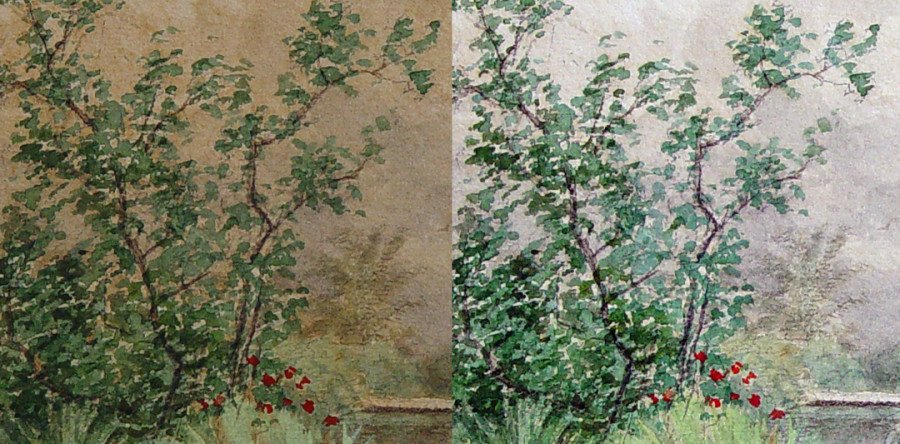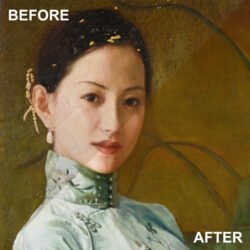Watercolor conservation is a specialized field that focuses on preserving and restoring watercolor artworks, which are delicate and vulnerable due to their water-soluble nature. Watercolor has been used as an artistic technique since ancient civilizations. It was used mostly to execute preparatory drawings for wall paintings and for ornamentation. The first known use is probably in some illustrations from Egypt, using papyrus as support. After that, it was widely used in codices and manuscripts during the medieval time, and it was finally used as a real artist technique by the great master Durer. It was not until the eighteenth century that watercolor became widely used for finished artworks, watercolor is composed of a pigment suspended in a water-soluble medium. The binder, traditionally Arabic gum, is added during the grinding process of the pigment to achieve a perfect cohesiveness between pigment and medium. Some other additives used commonly in watercolor painting, like tragacanth, glycerin, or oxgall, are added to modify properties like viscosity, working time, or penetrability of the water into the paper.
During the fabrication process, pigments should be finely ground to provide watercolors with their characteristic transparency. It is precisely due to this distinctive translucency, that the color of the support plays an important role in the luminosity of the final product. The color of the paper is used as a lighting agent.
One of the most frequent damages of watercolors is the high levels of discoloration of the paper. Most of the time, this heavy discoloration is due to the sizing applied to the paper, to limit its absorption capability, and therefore, to allow easier and longer workability. Those sizes were often alum based which is acidic by nature. With aging this acidity produces a strong discoloration of the paper. This excessive darkening of the paper entirely breaks up the chromatic balance originally intended by the artist.
Fortunately, watercolor gets firmly attached to the paper fibers with aging. That is why some water treatments are possible, allowing the conservator to remove the discoloration products formed over time. Nevertheless, a washing procedure applied to a watercolor is a risky procedure. Due to the limited amount of binder, pigments are very exposed during water or chemical treatment. They can be severely discolored if the proper treatment is not chosen. Pros and cons of the possible outcome should be weighed in order to make an informed decision that insures the preservation of the artwork which, in the end, is the main purpose of the conservation–restoration.








6 Responses